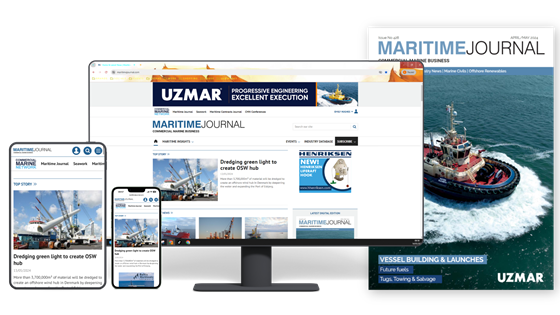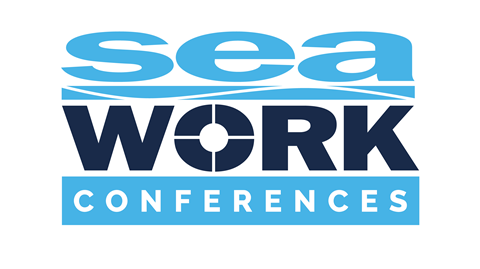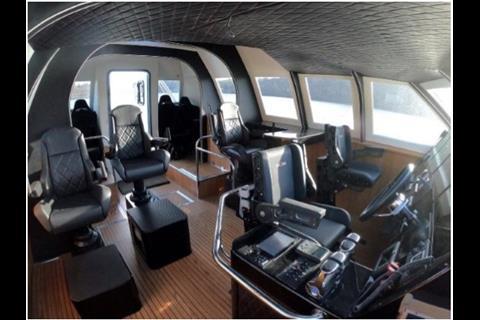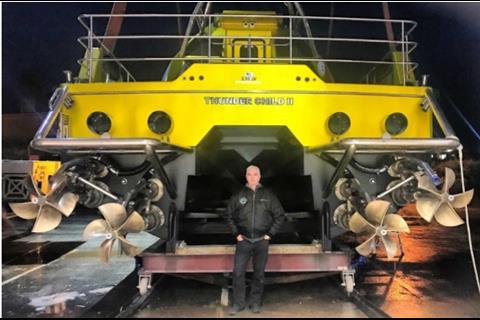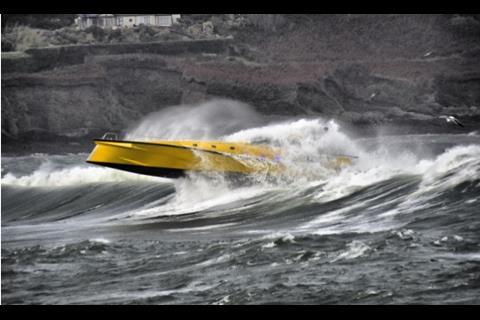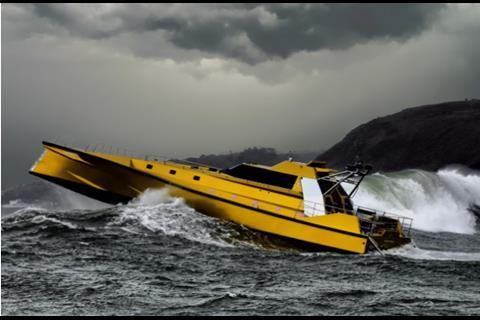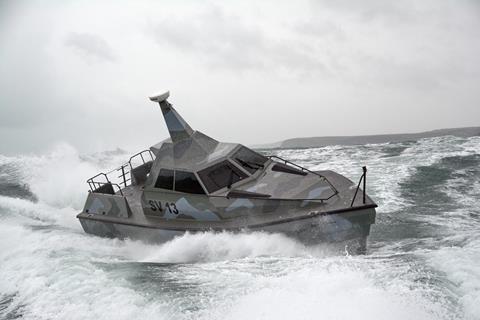Safehaven Marine first of class 22m XSV20 demonstrator ‘Thunder Child II’ is undergoing extensive sea trials during which she is proving to have excellent performance reaching a maximum speed of 54kts and fine seakeeping tested in a range of trials in varying sea states right up to Force 10 and in 6m seas off the Atlantic coast of Ireland, the hull is proving to be very sea kindly and soft riding with excellent stability.
XSV20’s unique hull design was developed to solve the head sea limitations inherent in traditional catamarans design whereby when a sea state exceeds a given size, steepness and frequency, waves, especially in head seas, will inevitably impact on the flat surface of the bridge deck causing slamming. On XSV20 the forward mono hull section comprising a wavepiercing bow and very deep V midship section that seamlessly transitions into the catamaran sections, very effectively pushes through and splits waves, dampening motions and preventing the flat surface of the bridge deck from ever directly impacting the water surface. The hull of course will by design fully wave pierce, the level to which is speed dependent, but in general wave height needs to exceed 2m before this begins to occasionally occur and to this end the superstructure is especially strengthened and incorporates 25mm ballistic glass for the front windows, with above deck fit out, arrangement’s and air intakes especially designed for this. Another benefit from the design concept is the high transverse stability provided by the catamaran aft sections, which minimises the rolling which traditional V hulls can suffer from when operating in rough conditions when heavy heeling, often as a result of wind or chop influence at the moment of becoming airborne off the crest of a wave can, in extremis, cause high impact loadings when their hull impacts the water heeled over, on what is then in effect a flat surface. The cat hulls offer greater initial transverse stability and resistance to wave induced heel in the first instance, and by virtue of their slim body nature offer less surface area to wave impact in these situations allowing a softer entry.
Integral to the design is the incorporation of a hydrofoil system, designed by Hyuscraft and manufactured installed between the asymmetrical catamaran hull, (the asymmetrical form particularly advantageous in this respect) and as such lifts the hull some 400mm out of the water at higher speeds allowing the forward monohull section to run mostly dry and clear of the water with very little wetted area greatly reducing resistance, the monohull sections only coming into significant effect in larger sized wave encounter effect allowing the hull to cut through waves. The hydrofoil also very effectively damps motions especially in respect of pitching. The design allows for wider load variations as the monohull section supports a significant percentage of the vessels overall displacement, and by virtue of its steep deadrise, buoyancy rises exponentially supporting increases in displacement, thereby preventing excessive hull sinkage, which on a pure catamaran hull design results in a significantly reduced bridge deck clearance when heavily loaded. As such seakeeping in large waves at displacement speed when inevitably forced to slow down is excellent with negative impact on seakeeping, slamming never occurring on the bridge deck.
Safehaven plan upon attempting a 4,500km UIM approved Transatlantic record attempt from Canada to Ireland via Iceland and Greenland, an extremely challenging voyage where she will face hazards of sea ice and the inevitable North Atlantic storms, the attempt being planned for July 2020. allowing adequate time to fully undertake the essential testing beforehand. The crew will also have adequate time to familiarise themselves with her capabilities and undertake a planned long distance trial run in advance of the voyage under her own steam to St Johns, Newfoundland once sea ice has cleared, where she will await a suitable weather window for the attempt itself. ‘Thunder Child II’ is fitted with quad Caterpillar C8.7 650hp engines coupled to quad France Helices SD3L surface drives in a staggered arrangement, the quad engine decision providing the desirable redundancy for such an epic voyage, as should one engine fail she will still be able to maintain planning speed. She is fitted with an 8,000 litre fuel capacity allowing an 800nm+ range at her cruise speed of between 32 and 40kts depending on fuel load, and is capable of altering her LCG for prevailing sea conditions via a fuel transfer arrangement to a 2,000L f/wd ballast tank.
Thunder Child II has a crew capacity for six, all on ‘military spec’ shock mitigation seating supplied by the Canadian company SHOXS, with additional seating aft in her main cabin for four more, Her lower forward cabin offers a spacious living area with full sleeping and live aboard facilities for her crew featuring 6 berths, a galley and heads compartment. The design has a high level of survivability with multiple watertight compartments. A Humphree interceptor trim control system is integrated allowing fine control and adjustability of her running trim. She carries a 3m RIB which the crew will use on her delivery voyage to capture no doubt some amazing images and media, all of which will be accessible to Safehaven’s followers through a dedicated web page for her record attempt, tracking her live progress that has been developed by 8 WEST and supported by Navarino and Dell. As expected a full suite of electronic navigation equipment is integrated with four 19” monitors in a ‘glass helm’ design, satellite communication is provided by Sailor.
Safehaven’s XSV20 has a L.O.A. of 23m, a beam of 5.2m and a lightship displacement of 24,000kg, featuring a fully cored FRP hull and superstructure in vinlylester, E glass and incorporating Kevlar and Carbon Fibre as reinforcement within the structure which has been over engineered to provide the necessary strength for heavy weather operation and designed to a 6g operational envelope. XSV20 is without doubt a very striking craft where form, whilst clearly following function, has also resulted in a sleek yet aggressive design that is quite unique, and certainly turns heads wherever she goes.


